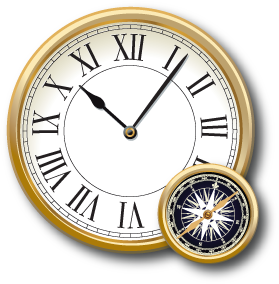TIMATION (TIME/NAVIGATION)
Developed by: The Naval Research Laboratory (NRL)
When: 1964
Purpose: To test whether accurate time signals sent from a satellite could provide a worldwide navigation system.
How it worked: TIMATION satellites carried very stable time references. These were used to test the concept of measuring position and distance to satellites based on the travel time of radio signals.
TIMATION satellites carried very stable time references. These were used to test the concept of measuring position and distance to satellites based on the travel time of radio signals.
Plan 621B
Developed by: Air Force Space and Missile Systems Organization and The Aerospace Corporation
When: Reached the testing stage in the late 1960s
Purpose: To help identify the locations of aircraft.
How it worked: Called for satellites to transmit a jam-resistant signal to aircraft, which would enable navigators to determine their latitude, longitude, and altitude.
SECOR (Sequential Collation of Range)
Developed by: U.S. Army
When: 1964 to 1969
Purpose: For mapping research to find exact positions of remote places far from the continents, especially Pacific islands.
How it worked: The satellites worked in tandem with four portable ground stations.
The Army successfully launched nine SECOR satellites.
Civilian Satellite Time
The U.S. Department of Commerce established a precise time service based on satellite signals in 1974. The National Bureau of Standards provided the time. The electric power industry found the time service useful for synchronizing AC generators to move electricity from one part of the power grid to another. The signals were transmitted by Geostationary Operational Environmental Satellites (GOES) of the National Oceanic and Atmospheric Administration (NOAA) until the end of 2004.






